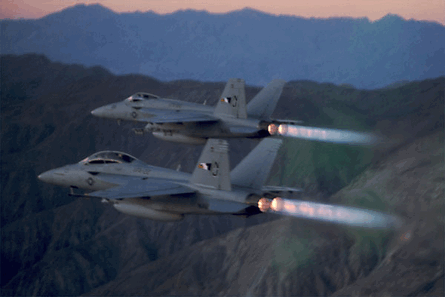Few US Navy and Marine Corps fighters will be grounded because of a new structural fatigue issue discovered in October, but the long-term impact on the Boeing F/A-18A-D fleet's future is still being assessed.
After inspecting for aileron hinge cracks on 476 out of 480 F/A-18A-Ds, the USN grounded 10 aircraft and imposed flight restrictions on 20 more. The groundings affected only two deployed aircraft - one each from the USN and USMC. "We're very encouraged by the results to date and project minimal operational disruption," the navy says.
The hinge cracks posed a huge safety concern after being detected last month. Losing an aileron panel in flight could lead to losing control of the aircraft, navy officials warn.
Although the fleetwide inspection showed the problem was not severe, the issue could reverberate in ongoing discussions about the USN and USMC's desired mix of older F/A-18s, new F/A-18E/F Super Hornets and Lockheed Martin F-35C Joint Strike Fighters.
 |
|---|
© Boeing |
Under the most optimistic scenario, the navy is projecting a fighter shortfall peaking at 69 aircraft in 2017. That number assumes no further delays for the F-35C and a yet-unproven life extension programme for legacy F/A-18A-Ds, raising the type's service life from 8,000 flight hours to 10,000h.
The navy acknowledges the aileron hinge cracks were not a "hotspot" in feasibility studies for the life-extension programme so far, so the impact of that issue is still being assessed.
Boeing has proposed delivering 150 more Super Hornets over four years for $49.9 million each. That includes about 90 aircraft to complete the navy's baseline programme and another 60 to address its fighter inventory shortfall.
The USN is continuing to study how many new fighters it needs to buy, compared to extending the life of older models, while also balancing its investment in both F/A-18E/Fs and F-35Cs.
"To extend them to 10,000h is going to be a problem," says Boeing F/A-18 programme manager Bob Gower. "The problem is how much downtime you have to get what capability?"
Boeing has no plans to offer the F/A-18E/F to the USMC as an alternative to the short take-off and vertical landing F-35B, company executives add. The service has asked the company to support a plan to keep its F/A-18A-Ds operational until the F-35B is scheduled to start entering service in 2012.
Source: Flight International



















